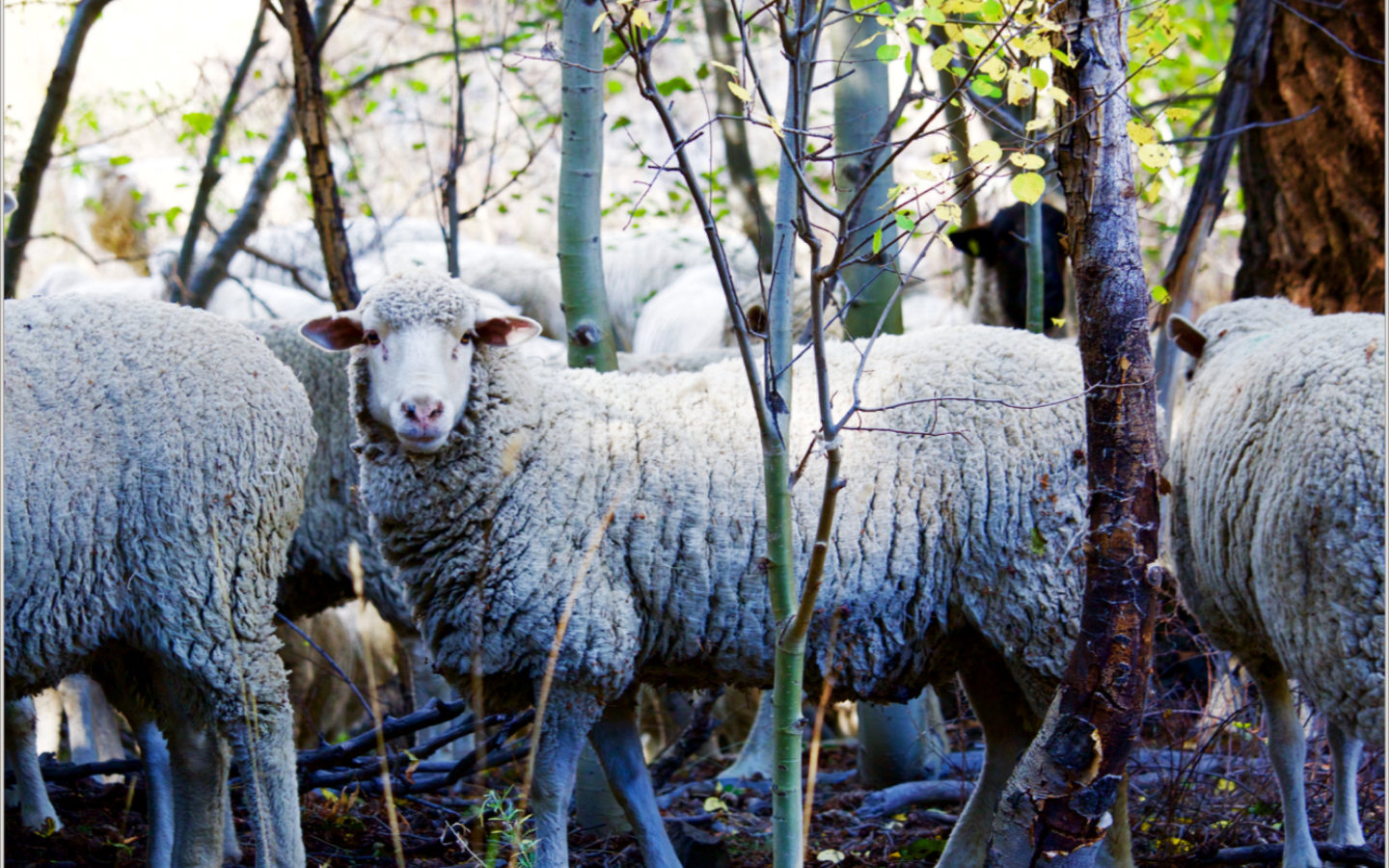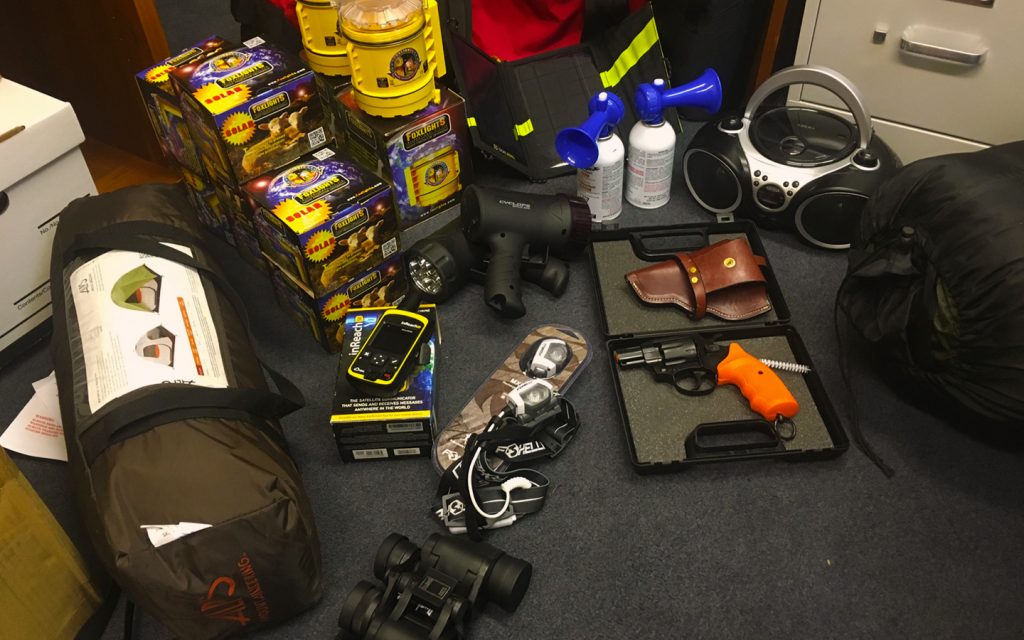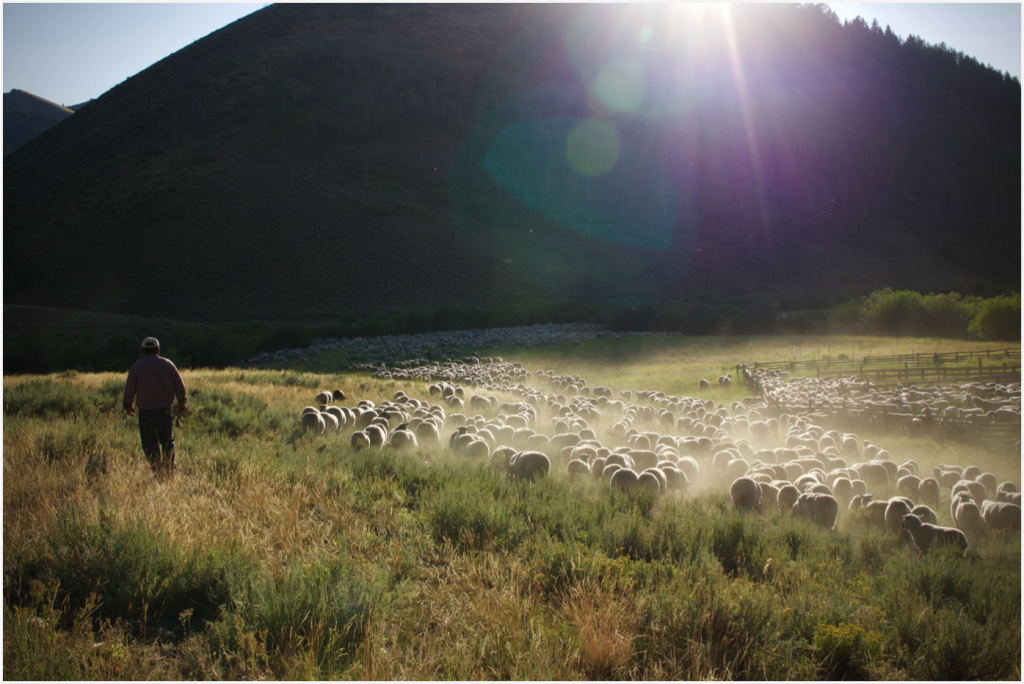
Lava Lake Institute’s Wood River Wolf Project
Several sheep producers in wolf country in south-central Idaho have successfully adapted their operations to deter wolf predation. Brian Bean, sheep rancher and president of the Lava Lake Institute for Science & Conservation, observes, “Generally speaking, sheep ranchers have been able to adapt more quickly to wolf presence than cattle ranchers, perhaps because range sheep operators have herders and guard dogs with their bands, and sheep aren’t simply put in a pasture and left largely unattended, often for days. We added nonlethal deterrents targeted at wolves to the traditional coyote-deterring strategies we were already using.”
In addition to protecting sheep bands with human presence and livestock guardian dogs (LGDs), sheep ranchers who are part of the Lava Lake Institute’s Wood River Wolf Project (WRWP) are equipped with “band kits”—various configurations of nonlethal deterrents. Band kits include such items as noise makers (boom boxes with CDs, starter pistols and air horns), lights (high intensity headlamps, handheld spot lights and fox lights) and other equipment and spares (a small solar panel, blanks for the starter pistol, batteries and other items). Herders learn the use of all of the deterrents and supporting equipment and understand which are best suited to particular situations and physical landscapes. They are trained to deploy multiple deterrents concurrently and how and when to rotate deterrents to avoid overuse and mitigate the risk of habituation. Bean explains, “Each ranch is different; as range operators, we need to learn and train on the full suite of available tools, learn what works for us in our country and vary the practices through time.”

Other practices that have reduced depredation by wolves in some situations include shed lambing (lambing in protective sheds, as contrasted with, for example, lambing on the open range where sheep are spread out and harder to protect at a particularly vulnerable time) and night penning (temporary, generally multi-strand electric fences used to defend bedding areas on the range). Although turbo-fladry effectively keeps wolves out of sheep bands when used for night penning, it is not included in WRWP’s band kits. But, according to Bean, “if a participating WRWP operator is heading into an allotment with known wolf presence, or into an area where wolf depredations are known to have occurred in prior years, the project will deliver turbo-fladry to the band at operator request and help the herder set it up.”
The practices encouraged and taught by WRWP must fit the situation and terrain, and be adapted through time to avoid wolf habituation. Wolves are smart, they change and adapt. Herders must observe what is happening on the range and adapt as well. Bean continues, “Our goal is to seek physical separation between livestock and wolves as much as possible; herders or range riders will not eliminate depredation but can significantly reduce it in most situations.”

Bean explains that with sheep, as with cattle, “stress-related weight loss is real and can be financially significant.” He reiterates that the benefits of nonlethal deterrents and practices include not just decreased depredation, but decreased livestock and herder anxiety. Constant tending with herders improves the ability to deploy deterrents effectively and herd stock away from danger, which reduces both depredation loss and anxiety-related weight loss in sheep.
As a result of their efforts, producers in the WRWP have seen a 90 percent reduction in sheep losses to wolves. Bean explains,
“Properly deployed and rotated, nonlethal deterrents decrease the number of depredation events and the number of animals killed per depredation incident. The reduction we’ve seen in sheep depredation by wolves here in the Wood River Valley, using herders and nonlethal deterrents, should work for sheep operators elsewhere in the Western states who are willing to make changes in human and livestock behavior. Coyote depredation has been and remains a far bigger problem than wolf depredation for most range sheep operators in wolf country in south-central Idaho.”
He also points out that wolves tend to drive out, suppress or kill coyotes in wolf range.
This article originally appeared as a case study in Reducing Conflict with Grizzly Bears, Wolves and Elk: a Western landowners’ guide.
Top image courtesy of Phoebe Bean/Lava Lake Land & Livestock.




